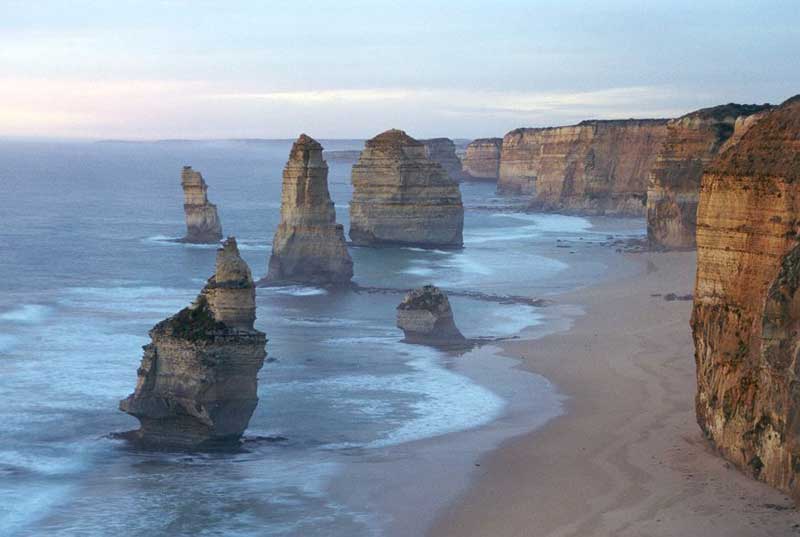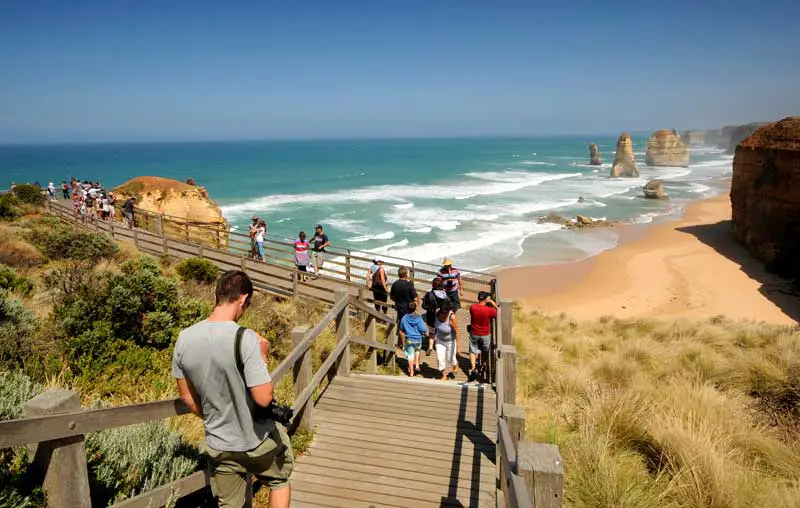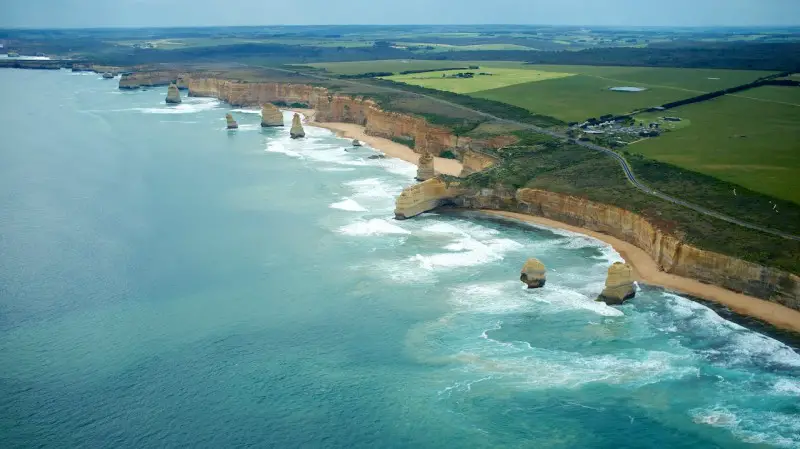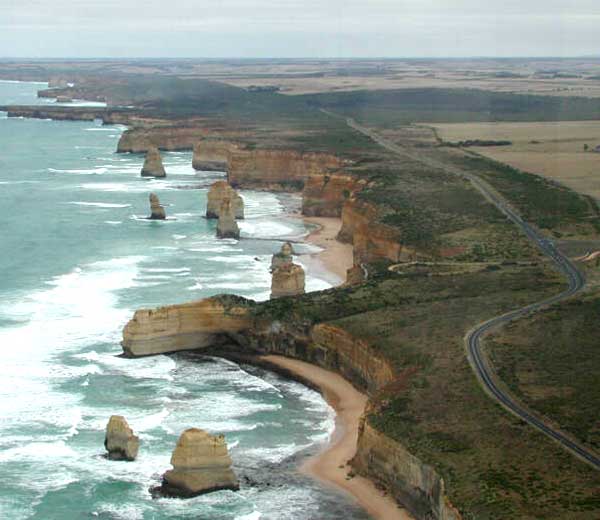Australia For Everyone: Canberra

The Twelve Apostles
The most photographed coastal feature in Australia, the Twelve Apostles is a string of sandstone stacks which have managed to survive the pounding of the Southern Ocean. The formation was originally known as The Sow and Pigs (or Piglets), Mutton Bird Island being the Sow, and shown thus on a map used by C.J. La Trobe during his March 1864 journey to Cape Otway. Many believe they were re-named in the 1950s (though in reality there are not twelve of them), however there are several “biblical” names hereabouts (Bay of Martyrs, Crown of Thorns Rock, The Grotto) shown on earlier maps so the name may well be much older.Like Uluru in Northern territory, the Twelve Apostles take on a different look and feel depending on the time of day or weather conditions prevailing at the time of viewing. This has resulted in some vastly different photos having been taken of the formation, though most are taken from the same spot, a viewing platform. Photographed at beach level, you get yet another perspective of these remarkable rocks.

Though The Twelve Apostles were formed thousands of years ago by the sea gradually eroding the soft limestone cliffs, the coast is slowly changing and there are frequent small rock falls. The most recent collapse of an Apostle occurred at around 9am on Sunday 3rd July 2005 when a large stack collapsed. In recorded history there have only ever been nine stacks making up the formation – the two behind you when you are standing at the lookout and facing west are not officially included as part of the group. Had Matthew Flinders been able to see them as he sailed along the coast in April 1802 (he passed them at night in a storm) they would have appeared exactly as this did at 8.50am on 3rd July 2005, prior to the first ever recorded collapse of an Apostle. The rest will all collapse eventually, but no one knows when.

There is presently no access to the beach below The Twelve Apostles lookout in order to protect a Little Penguin colony there. A tunnel under the lookout was cut to the beach from nearby Gibson Steps beach by fishermen many years go but this has been blocked off for many years. The only way to access the beach is by helicopter, small boat, or down the cliff face. The latter two methods are highly dangerous and not recommended.
Most people know the number of Apostles is actually eight since one collapsed in 2005, but few known that there are five more limestone columns hidden 50 metres beneath the ocean 6 kilometres offshore. It is thought that sea level changes submerged the ‘Drowned Apostles’ before they could erode. The sea stacks, thought to be up to 60,000 years old, were discovered during sonar mapping of Victoria’s southern coast.
The marine environment of the Twelve Apostles Marine National Park is characteristic of the surrounding area from Childers Cove (East of Warrnambool) to Gibson’s Steps, which has the highest diversity of intertidal and subtidal invertebrates on limestone in Victoria, as well as supporting a diverse range of fish. From the cliffs you can see the thick brown fronds of Bull Kelp (Durvillea potatorum) attached to the rocks near the low tide mark, swirling in the ocean swell. Southern Giant Kelp forms forests at some locations that reach the surface from 10 metres in depth. Lobster, abalone and sea urchins are common underneath the thick kelp canopy
Offshore reefs (30-60 metres deep) are known to support sponge ‘gardens’ with colourful and varied sponges, sea squirts and bryozoans that shelter many invertebrate animals including sea-spiders, beautiful sea slugs (or nudibranchs) and a diverse range of seasnails and seastars. Little Penguins feed in the park and nest in caves below the Twelve Apostles. Patient observation just after dark or in the early morning will allow visitors to view these birds from the platforms at the 12 Apostles.
The Twelve Apostle Marine National Park contains various geological rock types, including limestone, calcarenite, mudstone and sandstone adding to the complexity of the substrate and the range of rocky habitats available. These include platforms with shallow fissures and gutters, small rounded boulders and heavy reefs with sharp steeply sloping ridges greater than two metres in height, some with narrow crevices, and others with wide sand filled gutters. Dramatic arches, walls, caves and canyons are also present.
The Twelve Apostles Marine National Park represents habitats of the cooler waters of western Victoria. However, the most obvious environmental factor is the energy of the waves. The sea is seldom calm with waves pounding in every 10 to 16 seconds from the Southern Ocean. Away from the coast, the seafloor is mainly low rocky reef, with extensive areas of sand and shell rubble.









